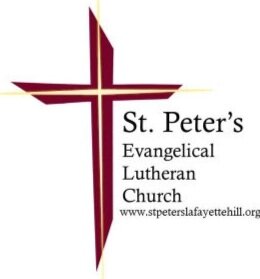St. Peter’s Evangelical Lutheran Church not only represents an historical congregation, having been founded in 1752, but also history itself, having played a small, but not insignificant role in the American Revolution. On May 20, 1778 the original church building and the church graveyard were the centerpiece for a key skirmish between the British forces then occupying Philadelphia, and a contingent of General George Washington’s Continental army, then based at Valley Forge.
In recognition of the 250th anniversary of the Battle of Barren Hill on Saturday, May 20, 2028, St. Peter’s is currently involved in planning, in conjunction with the Philadelphia-based Museum of the American Revolution, a celebration of this key moment in local history. As part of the initial planning phase of the event, St. Peter’s will be visiting the annual Revolutionary Germantown Festival (10 a.m. to 4 p.m.) on October 7. https://cliveden.org/revolutionary-germantown-festival/
Based around the Chew House at Cliveden on Germantown Avenue and Johnson Street, the centerpiece of the Battle of Germantown, the Revolutionary Germantown Festival will also be hosting the Museum of the American Revolution, which will display and interpret a replica of the tent that served as George Washington's mobile headquarters throughout much of the Revolutionary War. St. Peter’s is inviting everyone interested in either the Battle of Germantown or the Battle of Barren Hill to come to the festival and to meet representatives of the MUseum of the American Revolution.
The clash of armies at Barren Hill took place after Washington sent a sizable force of some 2200 men, including 50 Oneida Indian scouts, towards Philadelphia via Barren Hill to investigate the intentions of the British, who were thought to be planning a major troop movement. The area around the church was well known to Washington, since he had retreated through Barren Hill on the Germantown and Perkiomen Turnpike Road the previous fall after the unsuccessful Battle of Germantown on Oct. 4, 1777. Washington appointed the 20-year-old Frenchman, Marie-Joseph Paul Yves Roch Gilbert du Motier de La Fayette, Marquis de La Fayette to lead the Continental forces, “to obtain intelligence of their movements and designs.” Washington had also warned young General Lafayette that “any accident happening to [your detachment] would be a very severe blow to the army.”
However, Tory spies had appraised the British of Lafayette’s venture and a trap was laid for the Continental Army with some 20,000 British andHessian troops surrounding Lafayette’s men. However, using the steeple of the original church as a lookout, Lafayette managed to escape the trap and withdraw his forces back towards Matson’s Ford via the “sunken road” now known as Barren Hill Road, though not after an engagement was fought around the church and the graveyard, where 13 American casualties (nine Continental soldiers and four Oneida Indians) are still buried.
St. Peter’s, working with the Museum of the American Revolution, plans to commemorate this moment in American history in 2028. The first step in the process of organizing an event will be attending the Revolutionary Germantown Festival on Oct. 7.


